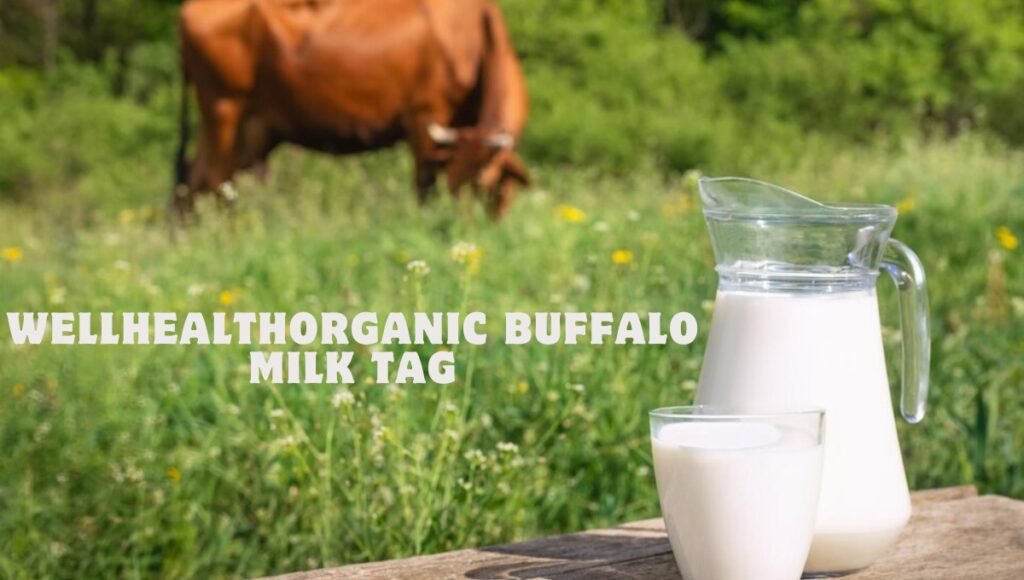Health & Fitness
Transforming Health and Medication Education: Expert Insights for the Digital Age

Introduction
In the rapidly evolving world of healthcare, health and medication education is more important than ever. With the advent of digital technologies and the increasing complexity of medical treatments, individuals need reliable information to make informed decisions about their health. This article, crafted by a subject matter expert, explores the pivotal role of health and medication education and how modern solutions like online health consultation are revolutionizing the way we access and manage health information.
Table of Contents
The Foundation of Health Education
What is Health Education?
Health education encompasses the strategies and processes through which individuals acquire the knowledge and skills necessary to maintain and improve their health. It involves understanding various health conditions, preventive measures, healthy lifestyle choices, and the safe use of medications. Effective health education empowers individuals to take proactive steps toward their well-being.
Key Components of Health Education
- Health Literacy: The ability to understand and use health information effectively.
- Preventive Care: Knowledge about vaccinations, screenings, and lifestyle modifications that prevent disease.
- Chronic Disease Management: Strategies for managing long-term conditions such as diabetes, hypertension, and asthma.
- Mental Health Awareness: Understanding mental health issues and accessing appropriate resources and support.
- Medication Safety: Ensuring the correct use of medications to maximize benefits and minimize risks.
The Crucial Role of Medication Education
Importance of Understanding Medications
Medication education is a subset of health education that focuses specifically on the safe and effective use of pharmaceuticals. Proper understanding of medications can prevent errors, enhance treatment efficacy, and improve overall health outcomes.
Benefits of Medication Education
- Prevents Adverse Reactions: Awareness of potential side effects and interactions reduces the risk of harmful reactions.
- Enhances Compliance: Understanding the importance and correct usage of medications promotes adherence to treatment plans.
- Optimizes Treatment: Knowledge about how medications work allows for better management of health conditions.
- Empowers Patients: Informed patients can engage in meaningful discussions with healthcare providers, leading to personalized care.
Essential Elements of Medication Education
- Medication Purpose: Understanding why a medication is prescribed and how it benefits your health.
- Dosage and Administration: Knowing the correct dosage, timing, and method of taking your medication.
- Side Effects and Risks: Being aware of possible adverse reactions and how to manage them.
- Drug Interactions: Recognizing how different medications or foods might interact and affect efficacy.
- Storage Instructions: Properly storing medications to maintain their effectiveness and safety.
Leveraging Technology for Enhanced Education
The Rise of Digital Health Tools
Technology has transformed health and medication education by making information more accessible and interactive. Digital tools such as mobile apps, online platforms, and telehealth services provide convenient ways to access reliable health information and support.
Benefits of Digital Health Tools
- Accessibility: Information is available anytime and anywhere, breaking down geographical barriers.
- Interactivity: Engaging formats like videos, quizzes, and interactive modules enhance learning.
- Personalization: Tailored content meets individual health needs and learning preferences.
- Convenience: Users can access information and support without the need for in-person visits.
Online Health Consultation: A Game Changer
One of the most significant advancements in digital health education is the availability of online health consultation. This service allows individuals to connect with healthcare professionals remotely, providing immediate access to expert advice and personalized care.
Advantages of Online Health Consultations
- Immediate Access: Receive timely medical advice without waiting for appointments.
- Expert Guidance: Consult with qualified healthcare professionals who can address specific health concerns.
- Confidentiality: Discuss sensitive health issues in a private and secure environment.
- Comprehensive Support: Access a wide range of services, including medication reviews, health assessments, and personalized treatment plans.
Practical Strategies for Effective Health and Medication Education
Developing a Health Education Plan
Creating a structured plan for health education ensures that individuals receive comprehensive and consistent information. A well-designed plan includes:
- Assessment of Needs: Identifying specific health concerns and knowledge gaps.
- Setting Goals: Establishing clear, achievable objectives for health improvement.
- Selecting Resources: Choosing reliable sources of information and educational materials.
- Implementing Actions: Engaging in activities that promote health education, such as attending workshops or using digital tools.
- Monitoring Progress: Regularly evaluating the effectiveness of the education plan and making necessary adjustments.
Engaging with Healthcare Professionals
Active participation in healthcare interactions enhances health and medication education. Key practices include:
- Asking Questions: Don’t hesitate to seek clarification on any aspect of your health or medications.
- Providing Feedback: Inform your healthcare team about any side effects or issues you experience.
- Collaborative Decision-Making: Work together with your healthcare providers to develop personalized treatment plans.
Utilizing Support Networks
Support from family, friends, and community resources plays a crucial role in health education. Building a strong support network involves:
- Family Involvement: Engaging family members in your health education process to provide additional support.
- Community Programs: Participating in local health initiatives and educational programs.
- Peer Support Groups: Joining groups where you can share experiences and learn from others facing similar health challenges.
Overcoming Barriers to Health and Medication Education
Addressing Health Literacy Challenges
Low health literacy can hinder effective health management. Strategies to improve health literacy include:
- Simplifying Information: Use clear and straightforward language to explain health concepts.
- Using Visual Aids: Incorporate charts, diagrams, and videos to enhance understanding.
- Interactive Education: Engage in hands-on activities and discussions to reinforce learning.
Managing Information Overload
The vast amount of health information available can be overwhelming. To manage this:
- Curate Reliable Sources: Focus on information from reputable organizations and healthcare providers.
- Organize Information: Keep track of important details using notes, digital tools, or health journals.
- Prioritize Relevant Information: Concentrate on information that directly pertains to your health needs and conditions.
The Future of Health and Medication Education
Innovations on the Horizon
The future of health and medication education is being shaped by continuous advancements in technology and education methodologies. Emerging trends include:
- Artificial Intelligence: AI-driven platforms can provide personalized health recommendations and virtual health assistants.
- Virtual Reality: Interactive simulations offer immersive learning experiences for health education.
- Wearable Technology: Real-time health monitoring devices collect data that can inform personalized education plans.
Integrating Education into Daily Life
Embedding health education into everyday routines ensures continuous learning and application. Practical steps include:
- Daily Health Tips: Incorporate small, manageable health tips into your daily schedule.
- Routine Self-Assessments: Regularly evaluate your health knowledge and update your information as needed.
- Community Engagement: Participate in local health initiatives and contribute to community wellness programs.
Conclusion
Health and medication education is a fundamental aspect of effective healthcare, empowering individuals to take control of their well-being and make informed decisions. By leveraging technology, engaging with healthcare professionals, and adopting practical management strategies, you can enhance your understanding and management of health and medications. Embrace the convenience and support of online health consultation to receive expert advice and personalized care whenever you need it. Invest in your health education today to pave the way for a healthier, more informed future.
Health & Fitness
Optimal Health Wellness For STD Test and RFT Test for in Mumbai

Regular health checkups are crucial for early detection and prevention of serious health issues. An STD test in Mumbai helps diagnose sexually transmitted infections (STIs) at an early stage, ensuring timely treatment and reducing the risk of complications. Similarly, an RFT test in Mumbai provides a comprehensive assessment of kidney function, analyzing multiple parameters to detect potential renal concerns. With advanced diagnostic centers in Mumbai offering reliable testing services, prioritizing your health has never been more convenient.
Table of Contents
RFT Test for Comprehensive Kidney Assessment
The kidneys play a vital role in filtering waste and maintaining the body’s fluid and electrolyte balance. An RFT test in Mumbai evaluates kidney function by analyzing multiple parameters related to renal health. This test includes:
- Serum Creatinine Levels – Measures kidney filtration efficiency.
- Blood Urea Nitrogen (BUN) – Evaluates the level of waste products in the blood.
- Electrolyte Levels (Sodium, Potassium, Chloride) – Monitors fluid balance and kidney efficiency.
- Uric Acid Levels – Assesses risks related to kidney stones and gout.
- Calcium & Phosphorus Levels – Evaluates bone health and mineral balance linked to kidney function.
- Glomerular Filtration Rate (GFR) – Determines how well the kidneys are filtering blood.
An RFT test in Mumbai is particularly recommended for individuals with pre-existing health conditions, those undergoing long-term medication use, and patients preparing for medical procedures requiring kidney function evaluation.
Why Consider an RFT Test
An RFT in Mumbai is advised for individuals experiencing:
- Unexplained Fatigue or Weakness – Possible signs of declining kidney function.
- Swelling in Hands, Feet, or Face – May indicate fluid retention due to kidney dysfunction.
- Changes in Urine Output or Color – Can signal kidney impairment.
- Persistent High Blood Pressure – Often linked to kidney health issues.
- Nausea, Vomiting, or Loss of Appetite – Common symptoms associated with kidney disease.
- Recurrent Kidney Infections – Chronic infections can contribute to long-term renal damage.
Routine RFT in Mumbai screenings help detect kidney diseases early, allowing individuals to take preventive measures and seek timely medical intervention.
Why Regular STD Testing is Essential?
Sexually Transmitted Diseases (STDs) can often remain undetected in their early stages, leading to severe complications if left untreated. An STD test in Mumbai helps in early diagnosis, enabling individuals to receive prompt treatment and prevent the spread of infections.
Many STDs, such as chlamydia, gonorrhea, syphilis, and HIV, may not show noticeable symptoms initially. Regular STD in Mumbai screenings are essential for sexually active individuals, especially those with multiple partners, a history of unprotected intercourse, or previous STI diagnoses.
Timely detection through an STD in Mumbai helps prevent long-term health complications such as infertility, chronic pain, and increased susceptibility to other infections. Leading diagnostic centers in Mumbai offer confidential and discreet testing services, making it convenient for individuals to maintain their sexual health.
STD Testing and Its Role in Sexual Health
Sexually transmitted diseases (STDs) can have long-term health implications if not detected and treated early. An STD test in Mumbai is crucial for identifying infections, even when no symptoms are present. Regular screenings help prevent complications such as infertility, chronic pain, and increased vulnerability to other infections.
Many STDs do not show immediate symptoms, making routine STD in Mumbai screenings necessary for sexually active individuals. Early detection ensures timely medical intervention, reducing the risk of spreading infections and improving treatment outcomes.
Healthcare providers in Mumbai offer reliable STD services, ensuring privacy and accuracy. Whether you have specific concerns or want to monitor your sexual health proactively, an STD in Mumbai provides peace of mind and promotes overall well-being.
Diagnostic Centers for STD and RFT Testing in Mumbai
Several reputed diagnostic centers provide STD in Mumbai and RFT test in Mumbai, ensuring accurate results and timely medical consultation. When choosing a testing facility, consider the following factors:
- Home Sample Collection – Many providers offer discreet and convenient home sample collection.
- Quick Report Turnaround – Choose labs that provide fast test results for early medical consultation.
- Comprehensive Health Packages – Some providers offer combined STD and kidney function test packages for a complete health evaluation.
Diagnostic centers in Mumbai ensure individuals receive expert guidance and accurate test reports for proper health monitoring.
Comprehensive Health Screening for Sexual & Kidney Health
An STD in Mumbai and an RFT test in Mumbai together provide a thorough evaluation of overall health. Regular screenings help detect infections and kidney-related concerns early, enabling effective management and treatment.
Many healthcare providers offer customized health packages that combine multiple tests for individuals requiring regular monitoring. These screenings provide valuable insights, supporting informed healthcare decisions and preventive health measures.
Conclusion
Routine screenings, including an STD test in Mumbai and an RFT in Mumbai, play a vital role in maintaining overall health. STD testing helps detect infections early, while kidney function tests ensure proper renal health monitoring and prevent severe complications.
With top diagnostic centers in Mumbai offering reliable and accessible services, scheduling an STD in Mumbai and an RFT in Mumbai is both convenient and efficient. These tests empower individuals to take control of their health, seek timely medical advice, and implement preventive measures for long-term well-being.
Taking a proactive approach to health ensures a better quality of life. Book an STD test in Mumbai and an RFT test in Mumbai today to stay informed about your health and make well-informed medical decisions.
Health & Fitness
Navigating Life Saving CPR Techniques in Locations: Adaptation for When Help Is Far

Introduction
Imagine going on a beautiful trekking adventure in a remote national park. The breathtaking views are interrupted when tragedy strikes, and someone in your group collapses without warning. With medical help hours away, your immediate actions can mean the difference between life and death. Knowing how to perform CPR (Cardiopulmonary Resuscitation) is crucial, especially in places where emergency services are not readily accessible. This article explores how CPR techniques can be adapted and applied in remote areas, equipping you with the knowledge and confidence to act in situations where every second counts.
Table of Contents
Importance of CPR in Remote Areas
Why is Immediate Action Necessary?
The first few minutes following a cardiac arrest are critical, often referred to as the “golden hour.” During this time, for every minute without CPR techniques, the chance of survival decreases by 7% to 10%. Performing CPR maintains blood flow to vital organs and can effectively sustain life until professional help arrives, making immediate action during this golden hour crucial for saving lives. Immediate CPR can double or triple a victim’s chance of survival during cardiac arrest. In remote areas, the window for survival in cardiac arrest cases is narrower because:
- Delayed Emergency Services: The response time for medical services is extended due to challenging terrains and distances.
- Communication Barriers: Cellular networks may be unreliable, complicating efforts to call for help.
- Lack of Immediate Medical Facilities: Proximity to hospitals or fully equipped medical centers can be hours away.
Basic CPR Techniques: A Lifesaver’s Toolkit Standard CPR Protocol
Knowing the steps of CPR techniques is important for everyone, but particularly critical in remote settings:
- Assess the Situation: Ensure the environment is safe for both you and the victim. Check for responsiveness and breathing.
- Call for Help: If possible, send someone to call emergency services while you begin CPR.
- Begin Chest Compressions: Push hard and fast at the center of the chest:
- Depth: At least 2 inches
- Rate: 100 to 120 compressions per minute
- Ventilations: If trained, provide rescue breaths after every 30 compressions, or continue compressions alone if not trained in breathing techniques.
Adaptations for Outdoor Environments
Performing CPR techniques and first aid outside a controlled environment requires a few adjustments:
- Location Selection: Move the victim to a firm, flat surface if possible.
- Breathing Techniques: In dusty or windy conditions, focus on continuous chest compressions. In harsh conditions, uninterrupted chest compressions can be as effective as standard CPR when performed correctly.
Overcoming Challenges in Remote CPR
Communication and Coordination
Having a plan can alleviate some of the stress when medical incidents occur far from the facility:
- Satellite Phones: Where feasible, carry a satellite phone to ensure the ability to send distress signals.
- Whistles and Flares: Useful for signaling nearby personnel or passing trekkers.
Mental Preparedness
The psychological impact of performing CPR in remote locations should not be underestimated:
- Training Courses: Engaging in regular first aid training can build muscle memory and confidence. First Aid Training Adelaide CBD offers comprehensive courses that cater to both urban and remote scenarios, preparing individuals to act confidently in emergencies.
- Peer Support: Talking through scenarios with travel companions can foster a team approach in emergency situations.
Stories from the Field: Real-Life Experiences
Saving Lives Against All Odds
Drawing inspiration from real-life experiences can help people get ready and stay motivated. When a teenage hiker abruptly fainted while displaying no indications of respiration during an Appalachian Mountain journey, the group leader was presented with a potentially fatal predicament. The leader acted quickly because there was no medical support in the area and it was expected to take more than two hours for relief to arrive. The tour leader started CPR right away, keeping constant compressions while comforting the others as others got emergency supplies and attempted to call assistance.
The situation was made more intimidating by the difficult terrain and remote location, but the leader’s training gave them the confidence they needed. In order to avoid fatigue, the team leader switched off with another member throughout the seemingly endless CPR. This cooperation kept the hiker moving until expert assistance eventually showed up.
Thus the leader’s ability to maintain composure and use the right procedures was directly responsible for the hiker’s survival, according to later confirmation from emergency personnel. Particularly in distant and high-pressure settings, the experience made clear how vital CPR techniques and First Aid training is. It was a potent reminder that poise and readiness are crucial when it comes to saving a life.
Conclusion
Medical emergencies often occur without warning, and in remote areas, the stakes are even higher. Learning CPR techniques & First Aid methods is not only wise but essential for anyone venturing into isolated territories. Therefore, taking a CPR techniques and First Aid Course, carrying basic first aid items, and mentally preparing for emergencies can transform a potentially tragic situation into a testament of preparedness and poise. Remember, the next life you save could be a loved one’s, or even your own. Be ready, stay calm, and act swiftly. Your proactive learning can be a beacon of hope when it seems all hope is lost.
Health & Fitness
Discovering Wellhealthorganic Buffalo Milk Tag: A Healthier Choice for You and Your Family

When it comes to dairy, you might have your favorite: cow’s milk, almond milk, or maybe even oat milk. But have you ever tried buffalo milk? If not, you’re in for a treat! In this post, we’ll dive into the world of buffalo milk, particularly focusing on the benefits of wellhealthorganic buffalo milk tag. You’ll learn about its nutritional advantages, how it compares to other types of milk, and why you might want to consider adding it to your diet. Let’s get started!
What is Wellhealthorganic Buffalo Milk Tag?
Buffalo milk comes from water buffaloes, which are primarily found in South Asia, Europe, and parts of the Americas. Unlike cow’s milk, buffalo milk has a creamier texture and a slightly sweeter taste. It’s rich in nutrients and often preferred for making cheese, yogurt, and other dairy products.
Why Choose Buffalo Milk?
Now, you might be wondering, “Why should I switch to wellhealthorganic buffalo milk tag?” Here are a few reasons that might convince you:
1. Higher Nutritional Value
Buffalo milk is packed with essential nutrients. Here’s how it compares to cow’s milk:
- Fat Content: Buffalo milk typically has a higher fat content (around 7-8%) than cow’s milk (about 3-4%). This means it’s creamier and richer, making it a great option for cooking and baking.
- Protein: It contains more protein, which is essential for muscle repair and growth. If you’re looking to boost your protein intake, buffalo milk is a delicious way to do it!
- Vitamins and Minerals: wellhealthorganic buffalo milk tag is rich in calcium, phosphorus, and vitamins A and B12. These nutrients are vital for bone health and overall well-being.
2. Lactose-Friendly
If you’re lactose intolerant but still crave dairy, buffalo milk might be a good option. It has slightly lower lactose levels than cow’s milk, making it easier for some people to digest. However, it’s still important to consult with a healthcare provider before making any changes to your diet.
3. Better for Weight Management
Due to its high-fat content, wellhealthorganic buffalo milk tag can help you feel fuller for longer. This satiety can help curb those pesky snack cravings throughout the day. Plus, the protein in buffalo milk aids in muscle maintenance, which is beneficial for anyone trying to lose weight or stay healthy.
How to Incorporate Buffalo Milk into Your Diet
So, you’re sold on buffalo milk. Now what? Here are some delicious ways to incorporate it into your daily meals:
1. Smoothies
Start your day with a nutritious smoothie! Blend buffalo milk with your favorite fruits, a handful of spinach, and maybe a scoop of protein powder for an extra kick.
2. Cheese and Yogurt
Buffalo milk is the secret ingredient behind some of the best cheeses, like mozzarella and ricotta. Try making homemade cheese or yogurt for a fun and rewarding cooking experience.
3. Cooking and Baking
Replace cow’s milk with buffalo milk in your favorite recipes. It adds a rich flavor and creamy texture to soups, sauces, and baked goods.
4. Coffee and Tea
If you love lattes or creamy tea, consider using buffalo milk instead of regular milk. It froths beautifully and adds a delightful taste to your beverages.
The Environmental Impact of Wellhealthorganic Buffalo Milk Tag
When choosing dairy products, many people consider the environmental impact. Water buffaloes generally require less water and feed compared to cows. They’re also known for their adaptability to different climates, making them a sustainable choice for dairy production. So, by opting for buffalo milk, you’re not only making a healthier choice for yourself but also for the planet!

Where to Find WellHealthOrganic Buffalo Milk Tag
You might be wondering where to find this magical liquid. WellHealthOrganic buffalo milk tag offers that’s organic and free from harmful additives. You can usually find it in health food stores, specialty grocery stores, or online. Look for labels that mention wellhealthorganic buffalo milk tag to ensure you’re getting a quality product.
Conclusion
Wellhealthorganic buffalo milk tag is more than just a dairy alternative; it’s a nutritious powerhouse that offers a wealth of health benefits. From its rich flavor and creamy texture to its impressive nutritional profile, it’s worth considering for your family’s diet. Whether you’re whipping up smoothies, baking delicious treats, or enjoying a comforting bowl of yogurt, buffalo milk can be a fantastic addition to your culinary adventures. So why not give it a try? Your taste buds—and your body—might just thank you!
-

 Games11 months ago
Games11 months agoMeerut City Satta King: Your Ultimate Guide to Winning!
-

 Blog10 months ago
Blog10 months agoThe Importance of Hiring Commercial Movers
-

 Business11 months ago
Business11 months agoDiscover Why debsllcs.org/ Is Leading in Sustainable Business Solutions
-

 Fashion1 year ago
Fashion1 year agoEssentials Clothing: Bold Statements in Minimalist Designs
-

 Tech11 months ago
Tech11 months agovstechpanel.com Off-Page SEO: Boost Your Site’s Authority Now!
-

 Tech8 months ago
Tech8 months agoWhy SEO is No Longer Just About Rankings
-

 Tech11 months ago
Tech11 months agoHow Do I Contact Hong Kong Reverse Technology Now for Solutions?
-

 Fashion11 months ago
Fashion11 months agoTheSpark Shop Kids Clothes for Baby Boy & Girl – Shop Now!












